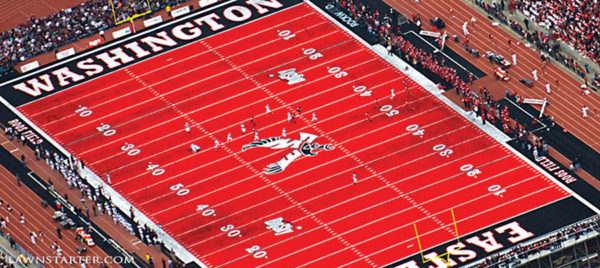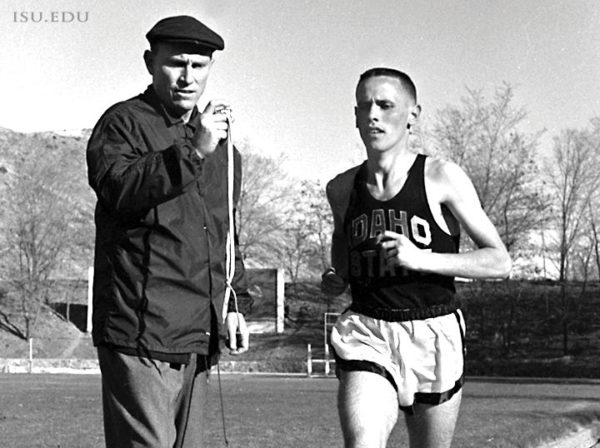 Lucas Gebhart
Lucas Gebhart
Sports Editor
They call it “The Inferno.”
An eye-popping, bright red field on the outskirts of Cheney, Washington with jet-black end zones, white lettering and sprawled out black and white eagle at midfield.
This field has played host to Eastern Washington football since 1967, but has only been a field since the year 2010, when a $500,000 donation from former NFL offensive lineman and Eastern Washington alum, Michael Roos, installed a new turf, expanded the press box and added luxury suites.
The field was renamed Roos Field in his honor and was nicknamed, “The Inferno.”
Despite the bright and intense colors, some players and coaches say playing on The Inferno is no different than any other field in college football.
“At first it is weird because you are on a red field,” said ISU linebacker Mario Jenkins. “After that, you aren’t really looking down.”
Originally built in 1967 and named Woodward Field, Eastern Washington was an NAIA program.
As the Eagles slowly progressed through the NCAA divisions, earning Division II status before being introduced to the Big Sky and Division I-AA- now known as the FCS- in 1987.
Since turning the field red in 2010, the Eagles hold a 41-7 record at home, winning a National Championship in the first season on the newly furnished turf.
“It is hot,” Jenkins said. “It just attracts the sun more.”
Saturday was Jenkins’ second trip to “The Inferno”, his first trip in 2014 featured a 1:35 kickoff with a 70-degree temperature.
The 2016 trip, featured a 3:30 kickoff with cloudy skies and a temperature of 56 degrees.
“I have played on it before and it wasn’t really a big deal,” Jenkins said. “It gets really hot, but it will be cold up there now.”
Wide receiver Hagen Graves has played both on the Boise State blue and Eastern Washington red and says that the color of the field is a non-factor.
“It is not too much different,” Graves said. “I grew up in the Boise area so playing on Boise State’s was not too much different.”
Boise State’s turf dates back to 1986 and according to a New York Times article earlier this year, colleges now must get BSU’s approval before changing their fields to any other color except green.
Eastern Washington’s red field, Central Michigan’s gray field and Central Arkansas’s purple and gray striped field were grandfathered in since they were installed before BSU was able to push the trademark through the United States Patent Office.
Since then, Coastal Carolina has received permission to install a teal football field. But the color of the field was not the focus for ISU on Saturday.
Instead, it was trying to slow down the statically best receiver in the conference, Cooper Kupp who broke the FCS record for most All-Time catches in FCS history Saturday.
“I think we need to rename the conference the Cooper Kupp Conference,” Head Coach Mike Kramer said in a Wednesday conference call regarding EWU’s star receiver. “In honor of his last great regular season game, we would like to present him with three things. A rocking chair because he is an old man, a travel bag because, get the hell out and the keys to every school in this conference because what a great career he has had.”
Kupp hauled in 7 passes for 70 yards, giving him the FCS record.
“I don’t think it is any different playing anywhere else,” Graves added.

